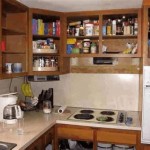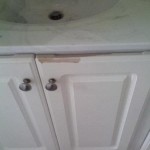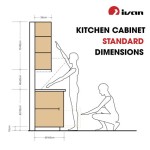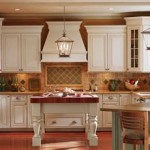How To Put Liners In Kitchen Cabinets: A Comprehensive Guide
Installing liners in kitchen cabinets is a practical and relatively simple undertaking that offers numerous benefits. Cabinet liners protect the interior surfaces from spills, crumbs, scratches, and general wear and tear, extending the lifespan and aesthetic appeal of the cabinetry. They also provide a degree of moisture resistance, helping to prevent mold and mildew growth, particularly in areas prone to dampness, such as under the sink. Choosing the right type of liner and proper installation techniques are crucial for achieving optimal protection and a professional-looking result.
This article provides a comprehensive guide to installing liners in kitchen cabinets, covering the necessary materials, preparation steps, different types of liners, cutting and fitting techniques, and considerations for specific cabinet areas. By following these instructions, homeowners can effectively protect their kitchen cabinets and maintain a clean and organized space.
Key Point 1: Preparing for Liner Installation
Before installing any liners, proper preparation is essential. This involves gathering the necessary tools and materials, cleaning the cabinets thoroughly, and taking accurate measurements.
The first step is to assemble all the required tools and materials. This includes the chosen liner material, a measuring tape, a utility knife or sharp scissors, a straight edge (such as a ruler or level), a pencil or marker, and cleaning supplies (such as a vacuum, all-purpose cleaner, and cloths or paper towels). Depending on the type of liner chosen, adhesive spray or double-sided tape may also be required.
Next, the kitchen cabinets must be thoroughly cleaned. Remove all items from the cabinets and vacuum any loose debris, crumbs, or dust. Use an all-purpose cleaner and a damp cloth to wipe down the interior surfaces of the cabinets, paying particular attention to areas prone to spills or stains. Allow the cabinets to dry completely before proceeding with the installation. This ensures that the liner adheres properly and prevents any trapped moisture from promoting mold growth.
Accurate measurements are crucial for ensuring a proper fit. Use a measuring tape to measure the length, width, and depth of each cabinet shelf or drawer bottom where the liner will be installed. It's recommended to measure each area individually, as cabinet dimensions can sometimes vary slightly. Record these measurements accurately, noting which measurements correspond to which cabinet area. It is also prudent to account for any obstructions, such as shelf supports or pipes. Add a small excess (approximately 1-2 inches) to the measurements to allow for trimming and adjustments during installation.
Key Point 2: Choosing and Cutting the Right Liner Material
Selecting the appropriate liner material is critical to the overall effectiveness and longevity of the installation. There are several types of cabinet liners available, each with its own advantages and disadvantages. The choice depends on factors such as budget, desired level of protection, and personal preferences.
Common types of cabinet liners include shelf liners, non-adhesive liners, adhesive liners, and drawer liners. Shelf liners are typically made of plastic or vinyl and offer basic protection against spills and scratches. Non-adhesive liners are easy to install and remove but may shift or slide over time. Adhesive liners provide a more secure hold but can be more difficult to remove without damaging the cabinet surface. Drawer liners are designed specifically for drawers and often feature a textured or cushioned surface to prevent items from sliding around.
Determine the specific requirements and priorities. For high-traffic areas or cabinets prone to spills, a thicker, more durable liner may be necessary. For delicate items or drawers containing silverware, a cushioned liner may be preferable. Consider the ease of cleaning and maintenance when making the decision. Some liners are easier to wipe clean than others.
Once the liner material is selected, the next step is to cut it to the required size and shape. Transfer the measurements taken earlier onto the liner material using a pencil or marker and a straight edge. It’s advisable to use the inside dimensions of the cabinet for cutting the liner, meaning the edge of the liner will butt into the sides of the cabinet. Use a utility knife or sharp scissors to carefully cut along the marked lines. Aim for straight, clean cuts to ensure a professional-looking finish. For complex shapes or corners, consider creating a template out of paper or cardboard first to ensure an accurate fit.
Cutting the liner slightly larger than the measured dimensions is recommended. This allows for adjustments during installation and provides a buffer against any minor discrepancies in measurements. The excess material can be trimmed later to achieve a perfect fit. Ensuring properly cut liners is a fundamental step for achieving a satisfactory installation.
Key Point 3: Installing and Securing the Liners
The final step involves installing and securing the liners in the cabinets. The installation method varies depending on the type of liner chosen, as well as the individual preferences.
For non-adhesive liners, simply place the cut liner into the cabinet shelf or drawer bottom. Ensure that the liner is properly aligned and covers the entire surface area. If the liner tends to shift or slide, consider using small pieces of double-sided tape to secure it in place. Place the tape strategically along the edges and corners of the liner to prevent movement without causing damage to the cabinetry.
For adhesive liners, peel off a small portion of the backing paper to expose the adhesive. Carefully align the liner with the cabinet surface and press it firmly into place. Gradually peel off the remaining backing paper, smoothing the liner as you go to prevent air bubbles from forming. Use a clean cloth or roller to press down on the liner and ensure a strong bond with the cabinet surface. Be cautious when working with adhesive liners, as they can be difficult to remove without damaging the cabinetry.
When installing liners in areas with obstructions, such as pipes or shelf supports, cut notches or holes in the liner to accommodate these features. Use a utility knife or scissors to carefully cut around the obstructions, ensuring a snug fit. Consider using waterproof sealant or caulk to seal any gaps or edges around the obstructions to prevent moisture from seeping in. Consider pre-fitting the liner to the area to ensure the cutouts for obstructions are accurate before completing the installation.
After installing the liners, inspect the cabinets for any gaps, wrinkles, or air bubbles. If necessary, use a utility knife or scissors to trim any excess material and ensure a clean, professional finish. Smooth out any wrinkles or air bubbles with a clean cloth or roller. Allow the adhesive (if used) to cure completely before placing items back into the cabinets. Refer to the manufacturer's instructions for specific curing times. Following these steps will help ensure a secure and long-lasting installation that effectively protects the kitchen cabinets.
Regular maintenance of cabinet liners involves periodic cleaning to remove spills, crumbs, and dust. Use a damp cloth and mild detergent to wipe down the liners as needed. For stubborn stains, consider using a non-abrasive cleaner or a solution of baking soda and water. Avoid using harsh chemicals or abrasive scrubbers, as they can damage the liner material. Promptly addressing spills and messes will help prevent stains and prolong the life of the liners.
By investing the time and effort to install cabinet liners, homeowners can effectively protect their kitchen cabinets from damage and maintain a clean and organized space. With the right materials and techniques, this is a relatively simple project that can make a significant difference in the longevity and aesthetic appeal of the kitchen.
Maintaining a clean and organized kitchen is essential for both hygiene and efficiency. Cabinet liners play a crucial role in achieving this by protecting the interior surfaces from spills, crumbs, and other messes. Regularly cleaning the liners and addressing any issues promptly will help ensure a healthy and functional kitchen environment.

Simple Diy Drawer And Shelf Liners

Simple Diy Drawer And Shelf Liners

Making Things Pretty Drawer Shelf Liners The Inspired Room

Simple Diy Drawer And Shelf Liners

Making Things Pretty Drawer Shelf Liners The Inspired Room

How To Put New Cabinet Liners In Your Cupboards

Simple Diy Drawer And Shelf Liners

Making Things Pretty Drawer Shelf Liners The Inspired Room

4 Uses For Easyliner Brand Shelf Liner In The Kitchen Duck

How To Cut Perfect Drawer Liners Every Time And No Measuring Required Salvaged Inspirations
Related Posts








